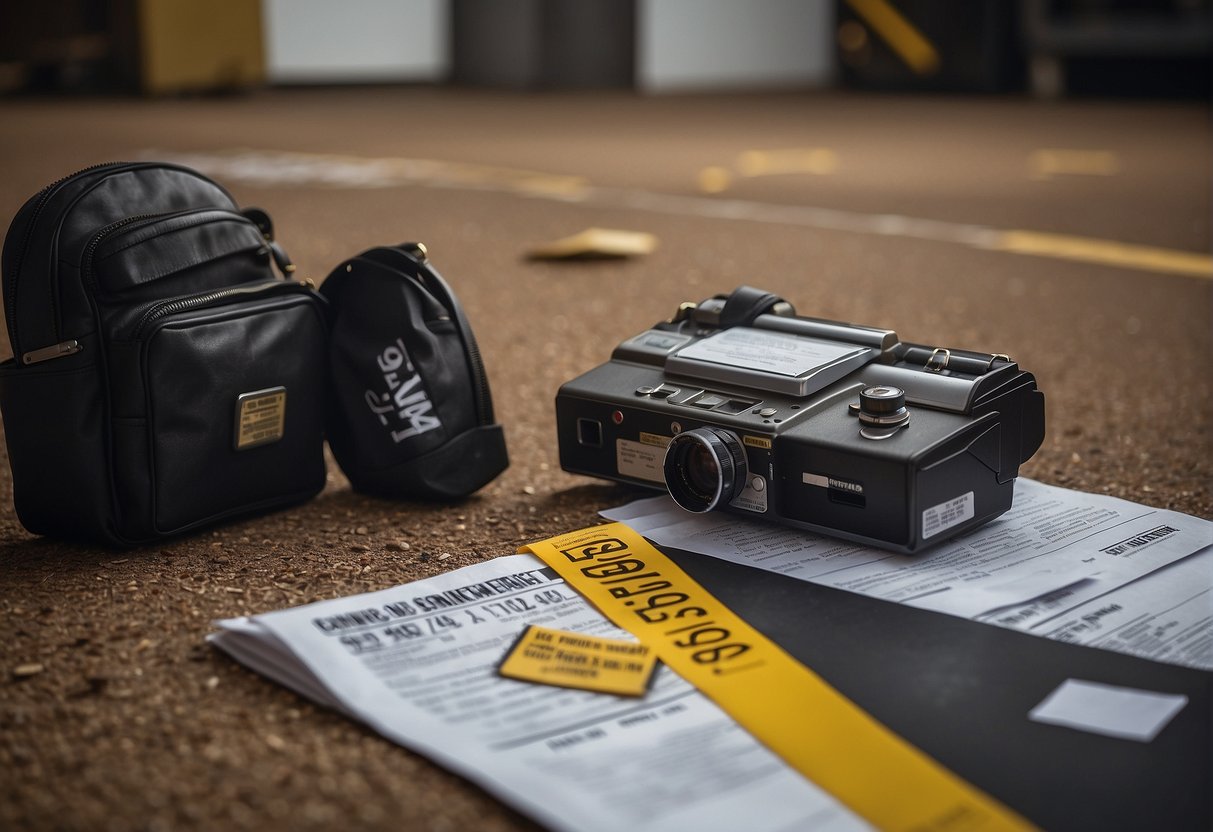Understanding Product Liability Law

In the realm of product liability law, we focus on holding manufacturers and sellers accountable for distributing products that pose danger due to defects or improper labeling.
Product Defects
Defects can arise in various ways:
- Design Defects: Flaws in the product’s design can make all products in a line hazardous.
- Manufacturing Defects: Errors during production that affect individual items or batches.
- Marketing Defects: Insufficient instructions, warnings, or safety information that mislead consumers.
Legal Theories
The legal process in product liability cases can implicate:
- Negligence: We must establish that a manufacturer’s carelessness led to the product’s defectiveness.
- Strict Liability: Here, we hold a party liable for damages regardless of fault, provided the product was defective and caused harm.
Protection for Consumers
Product liability laws are in place to protect consumers from personal injury, harm, or illness stemming from defective products. Manufacturers are expected to meet certain safety standards to prevent such instances.
Our Duty
We must demonstrate the link between the product’s defect and the consumer’s injury to seek damages effectively. Every step of the legal process is guided by stringent regulations that ensure a fair evaluation of claims.
By understanding product liability law, we arm ourselves with the tools to protect consumers and work towards a market where safety and reliability are of the utmost importance.
Types of Product Defects
In the realm of product liability, we identify three main categories of product defects that can lead to a product liability claim. It’s crucial for consumers to understand these defects to recognize when they may have a legitimate case.
Design Defects: These are inherent flaws that occur before the product is manufactured. They stem from the product’s blueprint, where we see that even if produced perfectly according to specifications, the product remains unsafe. These defects often violate safety standards and can affect an entire line of products.
- Example: A car model that has a tendency to flip over while making sharp turns because of its design.
Manufacturing Defects: These defects occur during the construction or production of the item. Only a portion of the products with the same design might have these defects, as they arise from an error in making them, not from the design itself.
- Example: A batch of smartphones with faulty batteries that overheat.
Marketing Defacts (Failure to Warn/Instructions): A product might be designed and manufactured correctly, but lacks the necessary warnings or instructions which could lead to unsafe use. Marketing defects include not only inadequate instructions but also insufficient warnings about the potential risks of using the product.
- Example: A powerful cleaning solvent sold without proper usage instructions and warnings about its toxicity.
In our pursuit of a product liability claim, we emphasize the significance of demonstrating that the defective product directly caused the injury or damage in question. By understanding these types of defects, we arm ourselves with the knowledge needed to assess the safety of products and the validity of potential claims.
The Legal Journey: Initiating a Product Liability Claim
When starting a product liability claim, we must understand the legal requirements, gather substantial evidence, and prepare for pre-trial activities to ensure a strong case against the defendant.
Eligibility and Filing Requirements
We ensure our product liability claim falls within the statute of limitations. We must file our claim by proving that the defendant’s product was defective and that this defect caused our injuries. As plaintiffs, our first step is identifying the correct court to file the claim. We consult with a personal injury lawyer to draft and submit a complaint, which details our allegations and the damages sought.
- File in the correct jurisdiction: Determine where the claim should be filed based on where the injury occurred or where the defendant operates.
- Complaint: A legal document that starts the lawsuit and outlines our accusations against the defendant.
- Statute of Limitations: Every state has specific deadlines by which we must file our claim.
Gathering Evidence and Building a Case
In building our case, we gather comprehensive evidence to support our claim. We collect medical records to document our injuries and may need expert testimony to establish the product’s defect. It is crucial to preserve the defective product and document its condition as close to the time of injury as possible.
- Medical Records: Doctors’ reports, X-rays, bills, and records of treatment related to the injuries.
- Expert Witnesses: Professionals who can testify about the product’s defect and causation.
- Preservation of Defective Product: Keep the product intact without alterations for examination by experts.
Navigating Pre-Trial Activities
The pre-trial phase involves several steps that require strategy and understanding of the legal process. We engage in discovery, where both sides exchange evidence and take depositions. We may encounter motions from the defendant, such as a motion to dismiss our case. During this time, we may also explore settlement opportunities to avoid going to trial. If settlement isn’t reached, we prepare for trial in front of a jury or judge.
- Discovery: The process where we obtain and disclose evidence with the defendant.
- Depositions: Sworn, out-of-court testimonies of witnesses that are recorded for later use in court.
- Motions: Legal requests, such as to dismiss the case or compel evidence, that may be filed by the defendant.
- Settlement: Negotiation with the defendant to resolve the case before it goes to trial.
Damages and Compensation in Product Liability Cases
In product liability cases, we often seek a range of damages to compensate for the harm caused by defective products. Compensatory damages are designed to reimburse for actual losses, usually consisting of both special damages and general damages.
- Special damages are quantifiable costs such as:
- Medical expenses
- Lost income
- Property damage
- Lost profits
- Future medical expenses
These are directly related to the monetary impact of the injury or damage sustained.
- General damages, on the other hand, focus on compensating for non-monetary aspects such as:
- Pain and suffering
- Reduced quality of life
- Loss of consortium
Punitive damages may also be awarded in cases where the defendant’s conduct is found to be especially harmful. They serve as a punishment and a deterrent from future wrongdoing, rather than simply compensating the victim.
When we discuss recovery, it’s about the legal process whereby victims are restored, as much as possible, to the position they were in before the harm occurred. The goal is to cover their losses, which include both financial loss and compensations for physical and emotional impacts.
To summarize, here’s an overview of potential compensation in product liability cases:
| Type of Damages | Description | Examples |
|---|---|---|
| Special Damages | Quantifiable financial losses | Medical bills, lost wages, etc. |
| General Damages | Non-monetary impacts | Pain and suffering, loss of consortium |
| Punitive Damages | Punishment for the defendant’s conduct | Generally awarded in egregious cases |
In the legal landscape, we strive to ensure fair compensation for those affected by defective products, while also promoting accountability and safety in product design and manufacturing.
Preventive Measures and Consumer Safety
As manufacturers, we must adhere to stringent safety standards during design and production to prevent product liability cases. We compile comprehensive instructions and warnings to accompany our products, ensuring consumers are well-informed of proper use and risks.
Consumer Education and Information:
- Instructions: Provide clear and detailed guides.
- Warnings: Highlight potential hazards associated with misuse.
Safety Standards and Compliance:
- Align with national and international safety protocols.
- Incorporate rigorous testing to identify defects early.
Proactive Measures in Supply Chain:
- Vet wholesalers, distributors, and retailers for compliance with safety practices.
- Regularly review and refine quality control mechanisms.
After-Sales Services:
- Offer reliable repair services.
- Maintain open channels for consumer feedback.
Our Commitment to Safety:
Enforcing precautionary measures in marketing, ensuring all claims are factual and substantiated. We take responsibility for our products’ impact from design to consumer handling.
| Product Category | Safety Standard | Regular Checks |
|---|---|---|
| Auto Parts | ISO 26262 | Biannual |
| Electronics | IEC 62368-1 | Quarterly |
In closing, by instilling a culture of safety in every aspect of production and sales, we as manufacturers, designers, and business stakeholders fulfill obligations under product liability laws, minimize risks and protect consumers.
Frequently Asked Questions
In this section, we address critical inquiries regarding product liability, clarifying key legal concepts and citing specific cases that have shaped this area of law.
What constitutes a manufacturing defect in the context of product liability?
A manufacturing defect occurs when a product differs from the manufacturer’s design or specifications, leading to a safety issue. In product liability cases, this type of defect arises from an error made during the assembly or production process that results in a product that is differently and more dangerous than the intended design.
How does case law define a design defect in product liability cases?
Case law generally determines a design defect in product liability cases when a product’s design inherently causes it to be unreasonably dangerous, even if manufactured correctly. This implies that there was a foreseeable risk at the design stage that could have been mitigated through an alternative, safer design.
Can you cite a landmark case involving failure to warn in product liability?
A landmark case involving failure to warn in product liability is the ‘Reyes v. Wyeth Laboratories’ case. It set precedence by highlighting the duty of drug manufacturers to warn not just prescribing physicians, but also the end-users about the risks associated with drugs.
What are some notable examples of defective product lawsuits?
Notable examples of defective product lawsuits include the General Motors ignition switch recall, involving cars turning off while driving, and the Johnson & Johnson talcum powder case, where the product was associated with an increased risk of ovarian cancer.
In a product liability case, how are damages typically determined?
In a product liability case, damages are usually calculated based on the injured party’s actual losses. This encompasses medical expenses, lost wages, pain and suffering, and sometimes punitive damages, designed to punish especially harmful conduct by the defendant.
What legal responsibilities do manufacturers have regarding defective products?
Manufacturers are legally responsible for ensuring their products are safe for consumers. They must design, manufacture, and test their products adequately, and provide clear instructions and warnings about the product’s use. Failure to meet these responsibilities can result in legal action and damages awarded to consumers.




